“Dystopian” TV may seem ubiquitous, but not all dystopias look the same. We asked the creatives behind several series — totalitarian, postapocalyptic or both — to explain how they bring the term to life.
‘The Boys’: Normalized dystopia
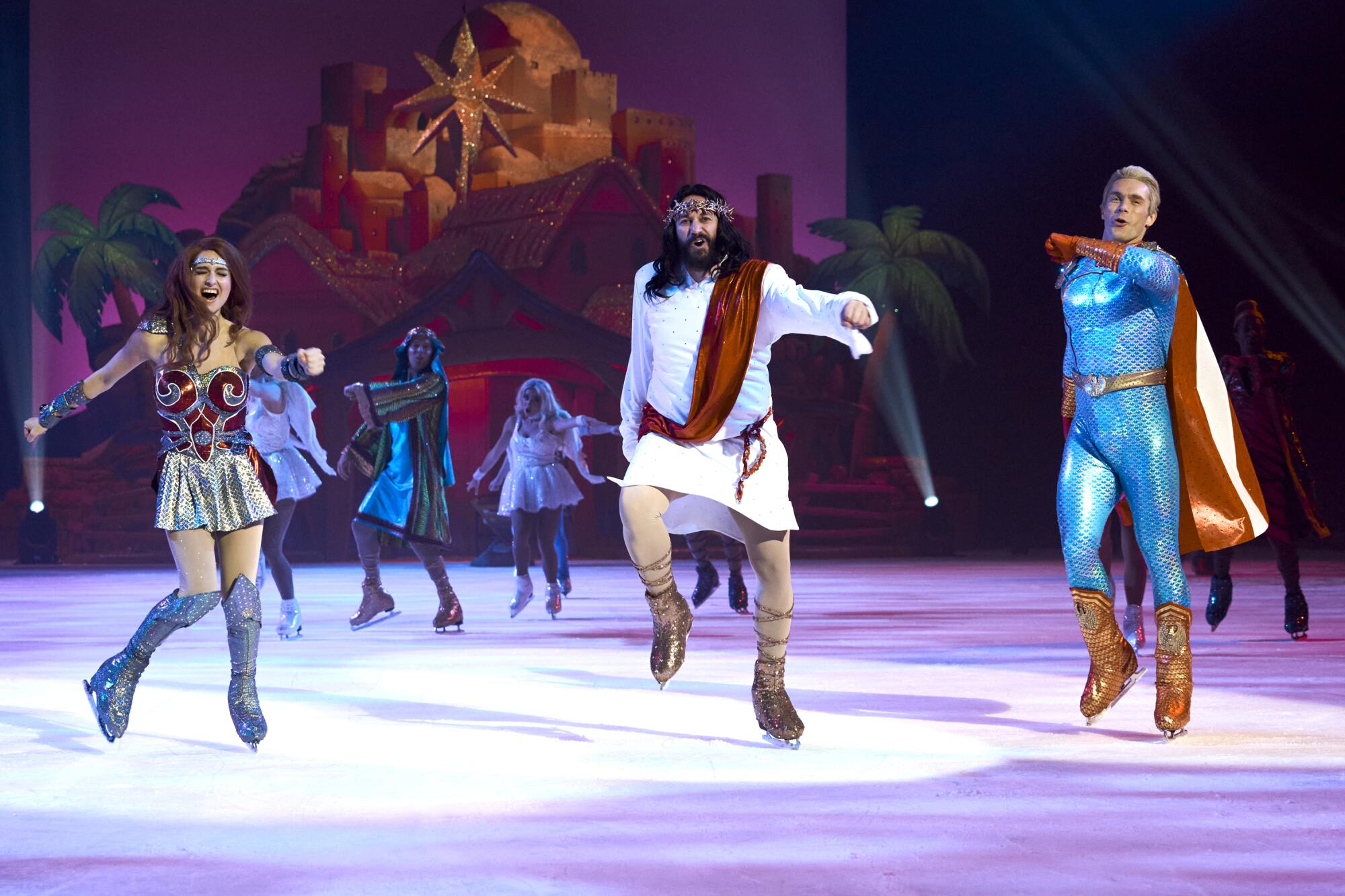
A scene from the Vought on Ice performance in “The Boys” Season 4.
(Jasper Savage / Prime Video)
“Dystopia, by definition, suggests an imagined society in which suffering and injustice are normalized. The people in that society are meant to believe their leaders and heroes are always right and working in their interest no matter how evil their values are or how horrifying their behavior,” says Mark Steel, the production designer for the comedy-drama about controlling capitalist overlords (and the outsiders who want to bring them down).
“One of the principal rules for the look of ‘The Boys’ world was to stay close to the recognizable visual language of American media and culture today,” Steel says.
The show uses everything from patriotic rallies to kids’ puppet shows to an ice-skating performance branded with the name of the omnipresent corporation Vought International to parallel real life.
“I think absurdity is most effective and funniest when it is set against normalcy,” Steel says. “We were able to build the Vought on Ice show in a real professional arena at real scale with skaters, costumes and music. The genius of the piece was how far we could facilitate the performance before all hell breaks loose.”
‘The Handmaid’s Tale’: Manicured dystopia
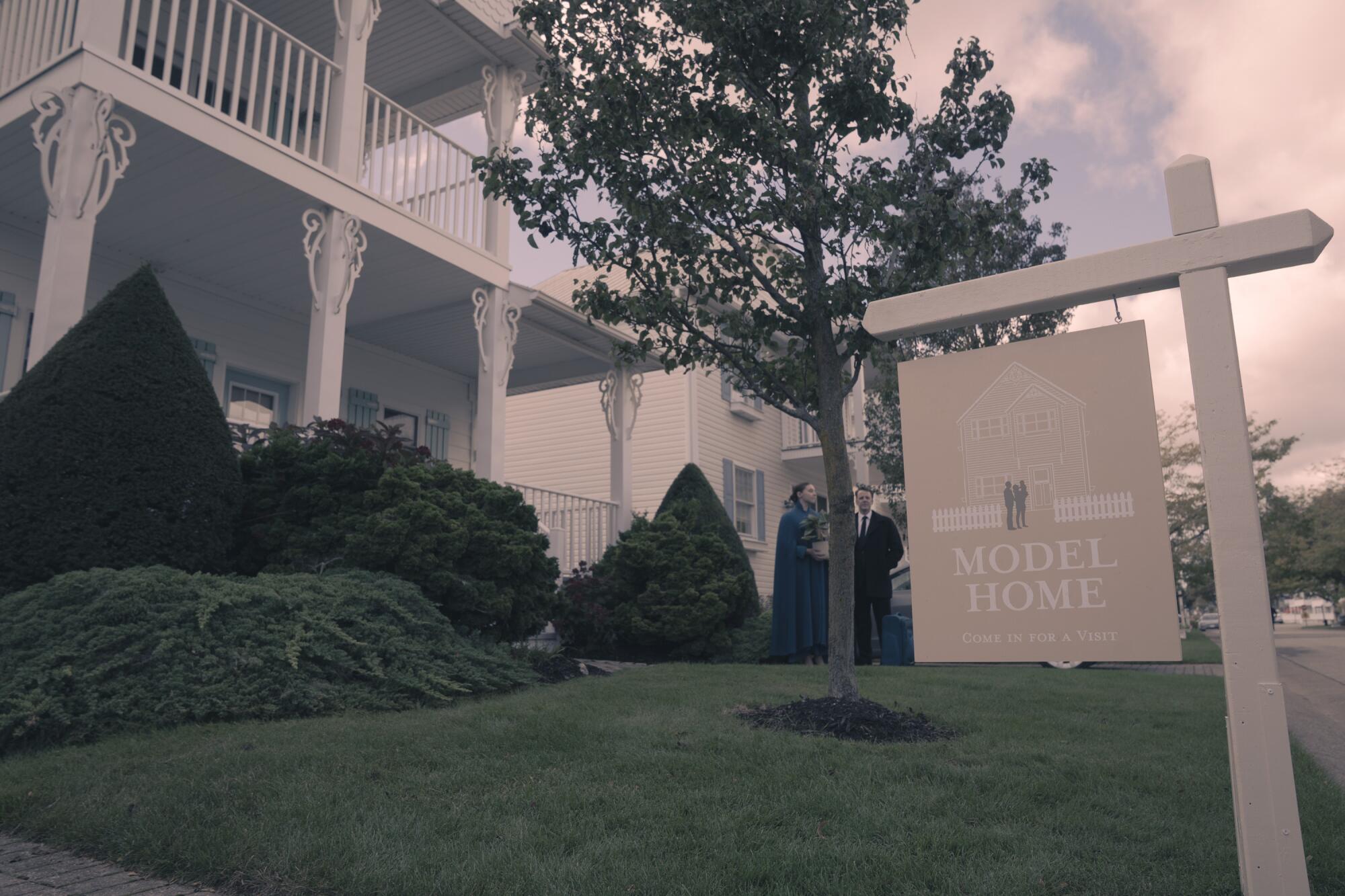
A scene from “The Handmaid’s Tale.”
(Steve Wilkie / Disney)
“The Handmaid’s Tale’s” Season 6 co-showrunner Yahlin Chang says the word “dystopia” usually connotes overgrown trees and disaster zones. In her show, the slave slate known as Gilead is a veneer of perfection that’s fooling no one, “like a cake with a razor blade in it,” she says.
“Our dystopia has always been very beautiful to look at … because it was meant to sort of clean up the horrible modern world from before where women weren’t having babies and where the environment had collapsed,” she says.
The homes of the elite commanders and their families are pristine and conservative. Everyone else’s surroundings are worn and muddied. But the last two seasons have introduced a new concept: color. Bradley Whitford’s Cmdr. Lawrence, the brainiac who masterminded Gilead, has designed New Bethlehem, a supposed safe haven for anyone who escaped his country’s oppression to return and live out a Mayberry-like existence. So production designer Elisabeth Williams and her team went all in on white picket fences and manicured lawns.
“It’s meant to be the kinder, gentler version of Gilead and it has a deliberately beautiful, pristine sheen on the surface,” says co-showrunner Eric Tuchman. “It feels artificial and sterile, with a kind of a theme-park vibe to it. It doesn’t feel quite real.”
‘The Last of Us’: Dystopian or postapocalyptic?
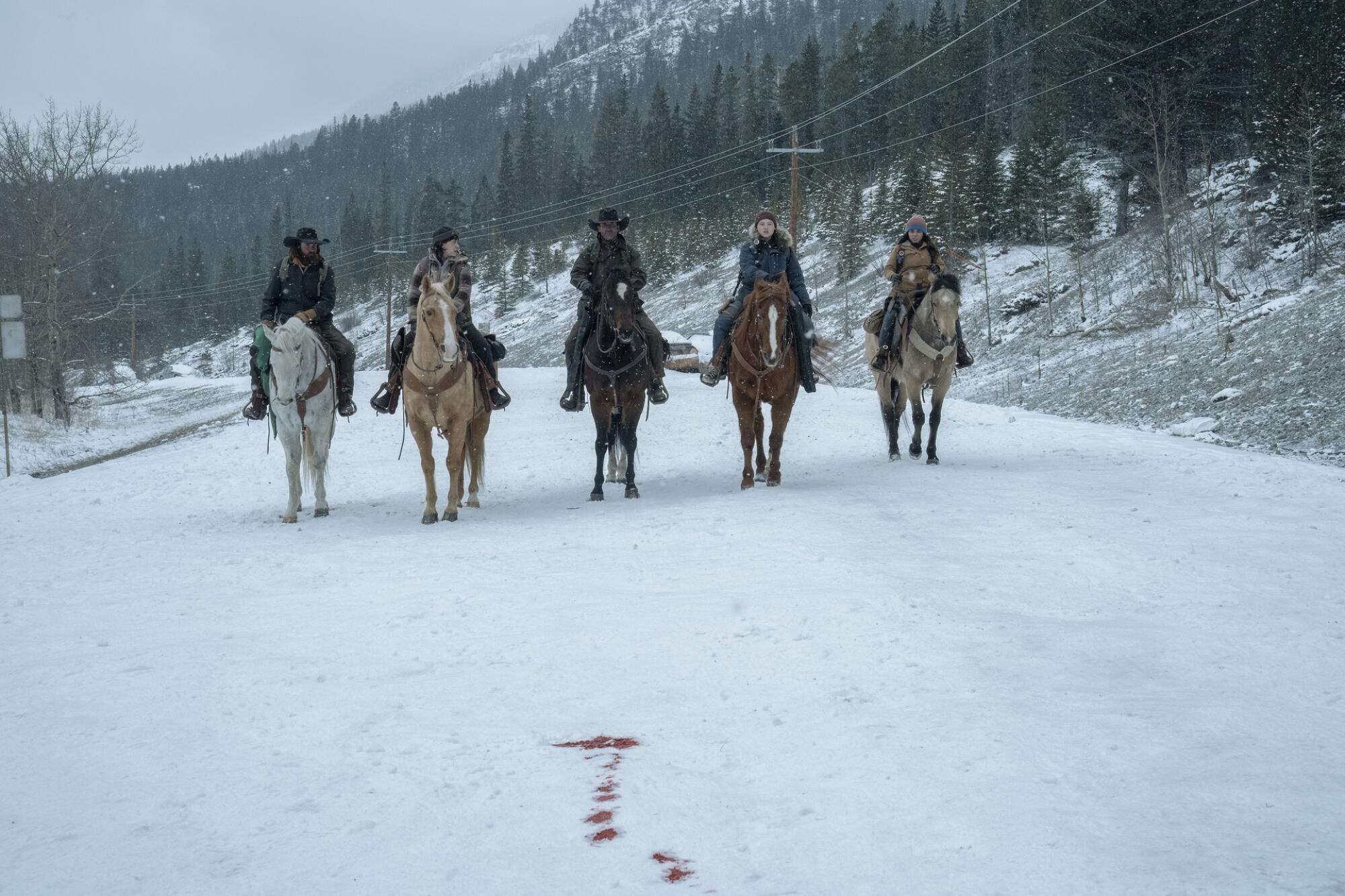
A scene from “The Last of Us” Season 2.
(Liane Hentscher / HBO)
“The Last of Us” is set after an outbreak has wiped out much of human existence. Because of this, Season 2 production designer Don Macaulay says his show also has to try to define “postapocalyptic,” another term that, he says, “can, visually, be a million different things.” The creators referenced the video game his show is based on, as well as real-world places that saw mass destruction, like the area around the Chernobyl nuclear power plant.
“There is a certain amount of violence associated with it and destruction associated with it,” Macaulay says of this world. “But, for the most part, it’s really nature taking over again and what that looks like in various environments. … There’s places in our story that haven’t been touched by humans in decades.”
This consideration of the time scale of dystopia and apocalypse led to conversations about when the world in the show “ended” — and if that matched the events in the game. Bella Ramsey’s lead Ellie is a music aficionado. But how far back does that record collection go?
“People who get really into the minutiae may point out that there are a couple of instances … where we bent those rules a little bit,” Macaulay says. The show premiered 10 years after the game launched, “so there are things in the game that became fairly iconic that wouldn’t have been around in our timeline.”
‘Paradise’: A childlike vision
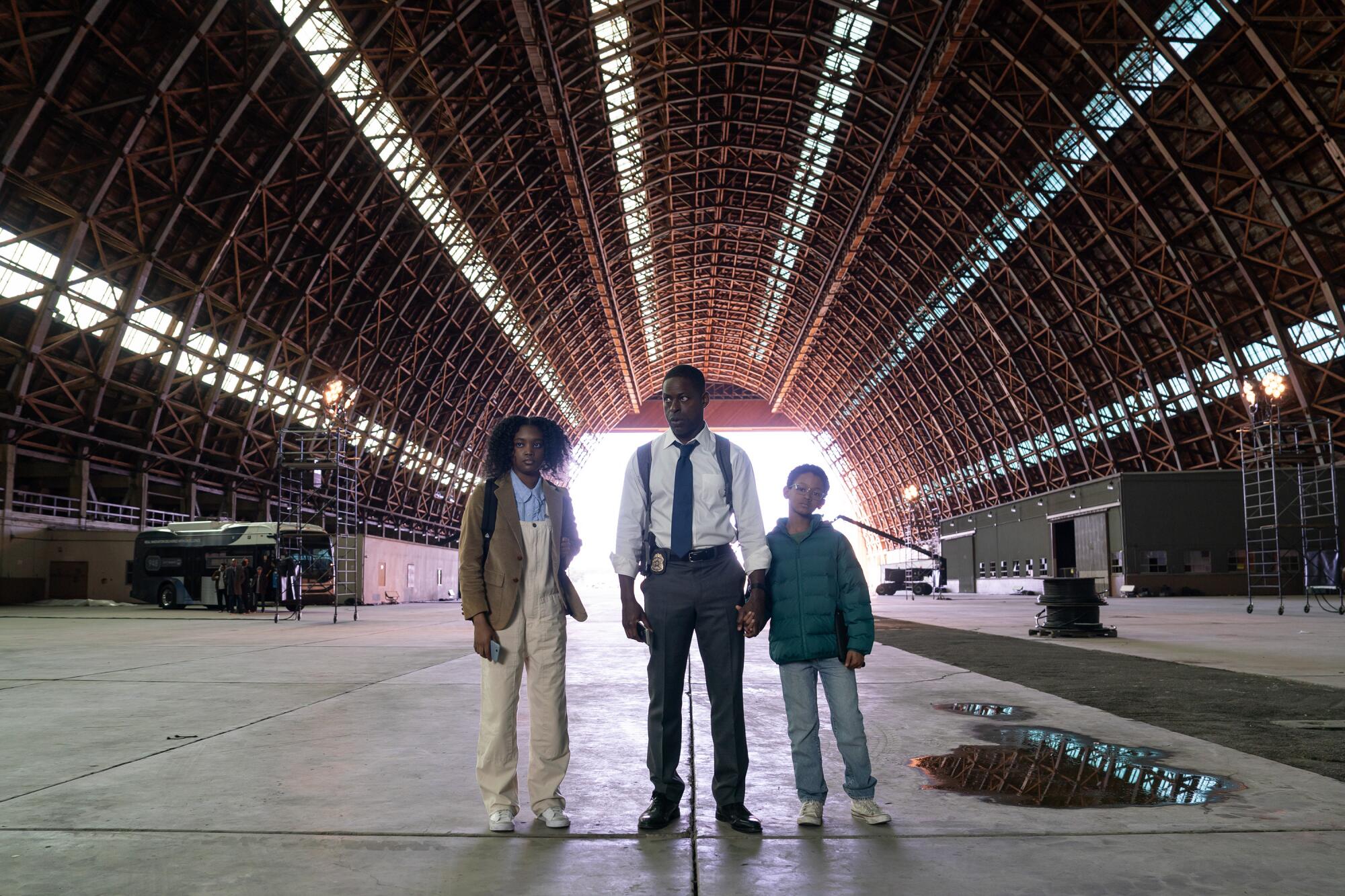
Actors Aliyah Mastin, left, Sterling K. Brown and Percy Daggs IV at the entrance to the bunker in “Paradise.”
(Brian Roedel / Disney)
More “Brave New World” than “1984,” “Paradise” is largely set after an environmental disaster, focusing on a group of survivors who live in an underground bunker that looks like the Grove shopping mall.
Production designer Kevin Bird says some of the first conversations he had with creator Dan Fogelman and others involved designing a “completely different experience from a show about a bunker that’s postapocalyptic and living in a rusty tower. We wanted the feeling of the town to be that idyllic, too-perfect way [that is] really just a way of distracting” characters from what’s really happening.
Here, he explains, essentials like food, clothing and housing are provided for everyone — “Just don’t stray too far from the path.”
Bird was aided by an early episode in which it’s made clear that billionaire Samantha Redmond (Julianne Nicholson) built the bunker as an ode to her deceased son; it’s what a child would create if instructed to make a perfect town.
“What was motivating her was to protect the rest of her family as long as possible,” Bird says.
‘Silo’: An aging dystopia
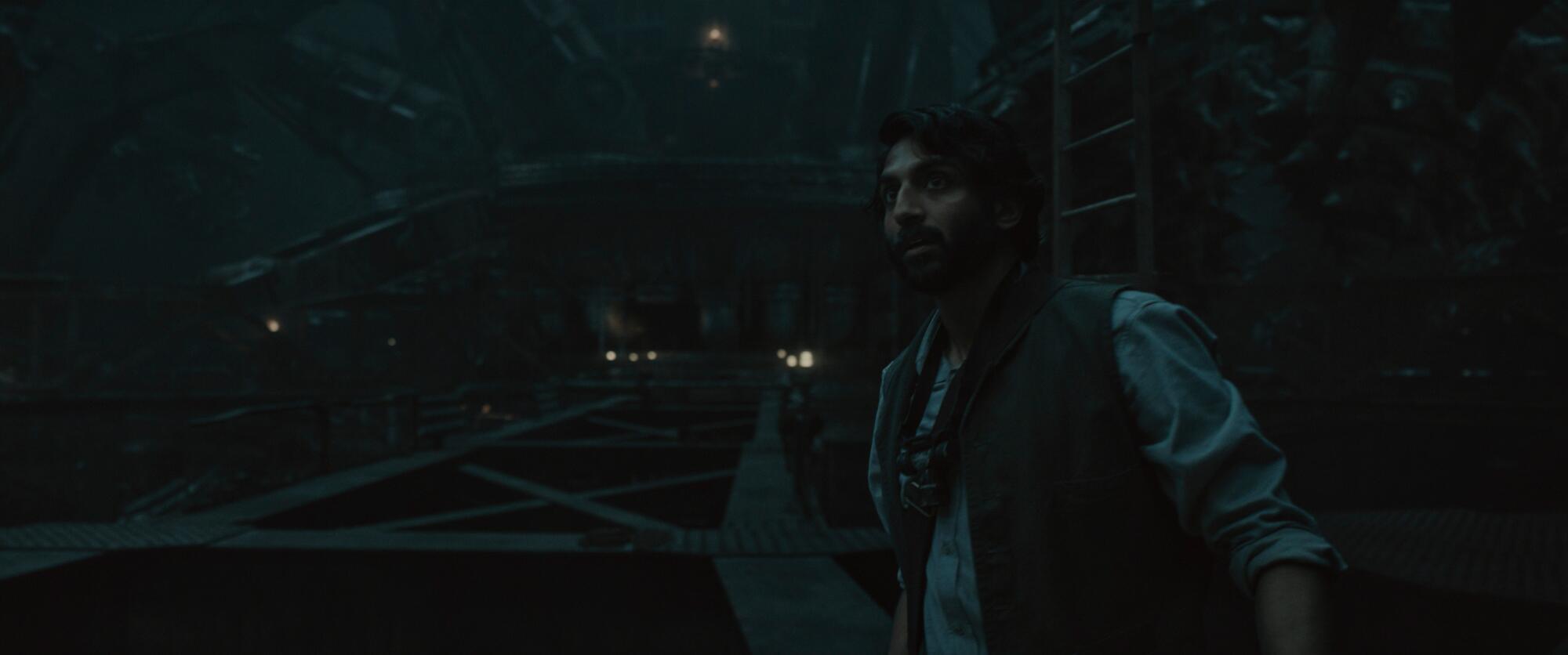
Avi Nash in “Silo.”
(Apple TV+)
The “Silo” bunker may be the future “Paradise’s” Samantha is attempting to avoid. In this show, production designer Nicole Northridge says, “The people have lived here for 350 years [and] they’re under no illusion that it’s a perfect world.” They just don’t know how to escape and, because it’s supposed to be set after a postapocalyptic event, they don’t know what’s waiting for them if they do.
The silo in “Silo” was designed in Season 1 by then-production designer Gavin Bocquet. Northridge says it was meant to have an “Eastern European socialist look, which is very functional, very austere.” Since this story starts centuries after the original inhabitants enter the bunker, she says, “Everything within the silo is essentially, when we come to it, reused, recycled and quite a bespoke make.”
But Season 2 introduces another silo, this one with graffiti and wall carvings. It also had flooded caverns. Northridge and her team had to research how concrete ages while submerged; the effects team built a giant chlorinated water tank. (The crew would sometimes go swimming in it after they wrapped for the day.)
